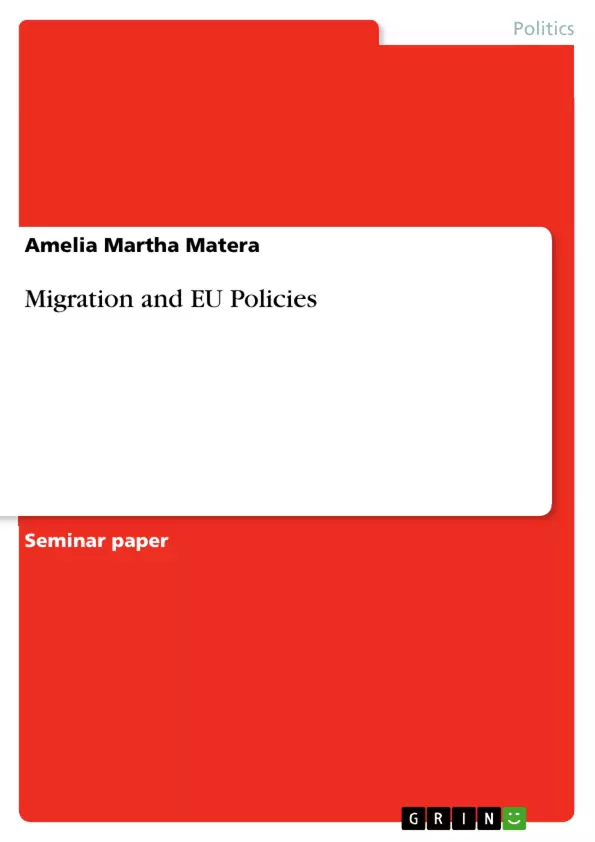In about and since the Valletta EU-Africa Summit of 2015, EU policy has shifted to controlling its own borders as well as ensuring cooperation with transit and sending countries in the control of immigration. Agreements have been concluded with sub-Saharan countries and those of the Sahel, as well as with countries in the Horn of Africa, notably Ethiopia. Explain what has been achieved at and since the Valletta Summit but also assess the controversies that have arisen about this new EU policy, particularly on the EU’s linkage of development aid with compliance in restricting emigrant outflows from third countries and in accepting returned migrants. Refer also to the EU-Turkey 2016 Understanding and the current agreements with Libya on managing migration. Refer also to the Human Rights dilemmas that this policy has ignited.
Inhaltsverzeichnis (Table of Contents)
- Introduction
- Valletta Summit
- EU Migration Policy
- Border management and security
- Cooperation with transit and countries of origin
- Link between EU Aid and Migration Policy
- Human Rights Dilemma: Deal with Turkey and Libya
- Conclusion
Zielsetzung und Themenschwerpunkte (Objectives and Key Themes)
This paper analyzes the European Union's (EU) approach to migration, focusing on the challenges posed by migration from developing countries to the EU. It examines the EU's policies in response to these challenges, particularly those implemented since the Valletta EU-Africa Summit of 2015.
- EU policies to control migration and manage borders
- Cooperation with transit and origin countries
- Link between EU aid and migration control
- Human rights concerns related to EU migration policies
- Analysis of specific agreements with Turkey and Libya
Zusammenfassung der Kapitel (Chapter Summaries)
- Introduction: Provides an overview of migration patterns in the Mediterranean region, highlighting the challenges faced by the EU and the paper's aim to analyze the EU's response.
- Valletta Summit: Examines the 2015 Valletta Summit, outlining its objectives, outcomes, and critiques. The summit aimed to strengthen cooperation between EU and African countries on migration, but it has been criticized for its focus on controlling migration rather than addressing root causes.
- EU Migration Policy: Explores the EU's overall approach to migration, focusing on border management and security, cooperation with third countries, and the link to aid policies.
Schlüsselwörter (Keywords)
The paper focuses on key concepts related to EU migration policy, including migration control, border management, security, cooperation with third countries, development aid, human rights, and the EU-Turkey and EU-Libya agreements.
- Citar trabajo
- Amelia Martha Matera (Autor), 2018, Migration and EU Policies, Múnich, GRIN Verlag, https://www.grin.com/document/442602



